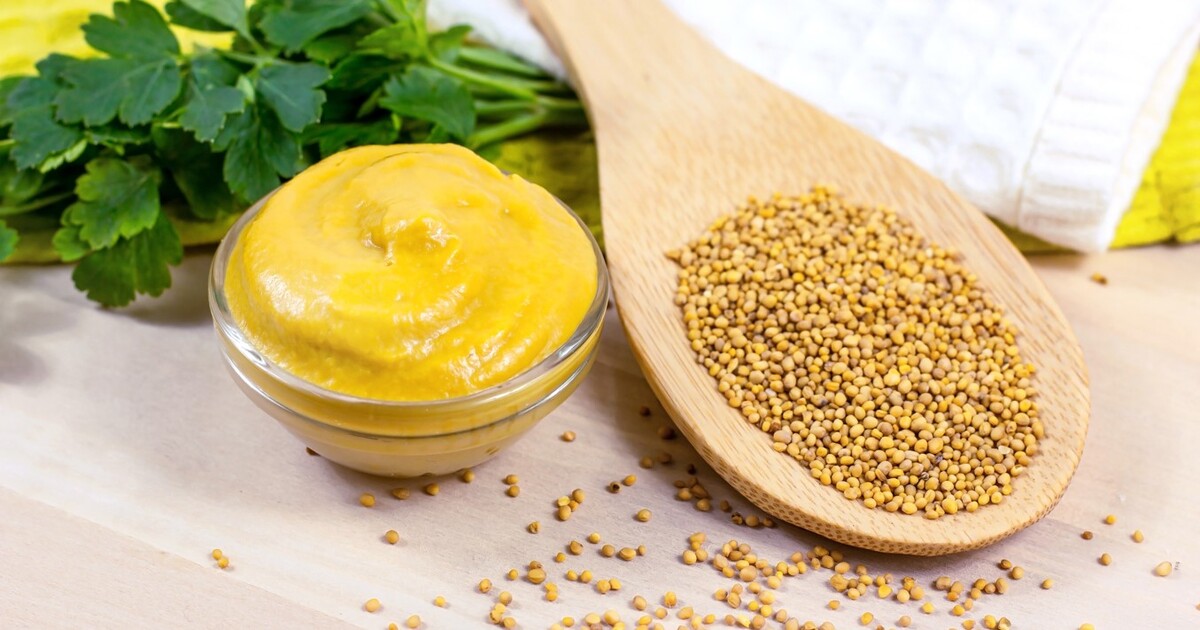The Global History of Mustard
Can you guess which country produces the world’s greatest supply of mustard seeds? Plus: A recipe for mustard cream sauce.
February 16, 2025

This dreary time of year needs some spicing up. How about some eye-watering mustard?
Pythagoras recommended mustard poultices for scorpion stings, and Hippocrates used them to treat lung infections. Johnson & Johnson manufactured them commercially until more modern solutions were found.
Mustard is made from ground mustard seeds, not the plants. Nepal is the country that produces the world’s greatest supply of mustard seeds at 220,250 tons — way above the United States’ 37,108 tons and the UK’s 7,500 to 10,800.
Mustard’s ancient origins
Mustard seeds have been found in a seed cake dating between 9224 and 8753 BC from Jerf el Ahmar, the pre-pottery Neolithic site in Syria.
In the court of the Zhou Dynasty in China (1046-256 BC), yellow mustard seeds were ground down and made into a paste used as a digestive during royal feasting, to whet the appetite for the extensive courses still to come.
The Romans made mustard. According to a recipe in “De re cocquinaria,” a collection of Roman cookery recipes compiled in 5 BC, they mixed together ground mustard, black pepper, caraway seeds, toasted coriander seeds, lovage, dill, celery, thyme, oregano, onion, honey, vinegar, fish sauce (garam) and oil, and used it to baste a spit-roasting boar.
Mustard in French history
Mustard-making in France began not in Dijon but in Paris, in the 10th century when the monks of Saint-Germain-des-Prés started producing it. Although mustard-makers were listed on the royal registers in Paris in 1292, Dijon had become the recognized mustard-making center.
There is an account of guests at a gala in 1336 of the Duke of Burgundy consuming 320 liters/676 pints of mustard crème — which might not differ from this week’s recipe.
Maurice Grey, a mustard-maker, partnered in 1877 with his financial backer, Auguste Poupon, to produce Grey-Poupon, which was granted an Appellation d’origine contrôlée in 1937.
His recipe was a secret but said to include white wine. That seems probable as the name comes from “must,” the “moût” of moutarde, the mix of grapes, their leaves and stems that is made before yeast is added to turn it into alcohol. To this day, that “must” is often added to posh mustard, particularly in France.
Why Dijon falls short
Still, Dijon mustard is sissy, in my view. Mustard needs to bring tears to the eyes. Colman’s does, even more than gorchitsa.
Do not buy the ready-made — buy the powder and make it up yourself stirring in teaspoons of water, little by little.
It began life in 1814 as a powder invented by Jeremiah Colman, a flour miller, and it is said the Colmans made their fortunes from the mustard that was left on the side of the plate.
The bracing strength of it will make your nose run but the Colman cut of the global market should not be sniffed at: In 2023, it was estimated at $6.3 billion and is expected to rise over 6% more by 2030.
Mustard’s rise in the U.S.
Mustard was not widely known in the United States until the 1904 St. Louis World’s Fair when French’s Classic Yellow Mustard was served over hot dogs by George and Francis French. Its color matches Colman’s — but its pungency doesn’t come close.
If you plan to cook with mustard, you should stick to Dijon where it does come into its own.
This mustard sauce works not just with a thick pork chop or a roasted game bird, but if you just want to pour it over mashed potatoes, it is delicious. I have even had it alongside a piece of pan-fried line-caught salmon.
Ingredients
25g/1½ tablespoons butter
1 tablespoon oil
2 large cloves garlic, unpeeled
2 thick spare rib or chump chops, 1½ cm/1 inch thick
1 glass white wine
150ml/5 fl oz double or whipping cream
1½ tablespoons grain mustard
1½ tablespoons smooth Dijon mustard
1 heaped tablespoon capers (optional)
Method
Melt the oil and butter over medium low heat. Smash the garlic and add it with the chops to the fats. Brown one side then the other then lower to the heat to cook the chops through.
Move to a warmed plate then add the wine to the pan, scraping up the caramel to dissolve it. Let the liquid thicken then beat in the cream, followed by the mustards.
Add the capers if using, return the chops to the pan and turn them a couple of times in the sauce then serve with mashed potatoes.
Takeaways
Nepal produces the world’s greatest supply of mustard seeds at 220,250 tons — way above the U.S.’ 37,108 tons and the UK’s 7,500-10,800 tons.
Mustard seeds have been found in a seed cake dating between 9224 and 8753 BC from Jerf el Ahmar, the pre-pottery Neolithic site in Syria.
Pythagoras recommended mustard poultices for scorpion stings, and Hippocrates used them to treat lung infections. Johnson & Johnson manufactured them commercially until more modern solutions were found.
In the court of the Zhou Dynasty in China (1046-256 BC), yellow mustard seeds were ground down and made into a paste used as a digestive during royal feasting to whet the appetite for the courses still to come.
The Romans made mustard according to a recipe in "De re cocquinaria" — a collection of Roman cookery recipes compiled in 5 BC.
Mustard-making in France began not in Dijon but in Paris in the 10th century, when the monks of Saint-Germain-des-Prés started producing it.

